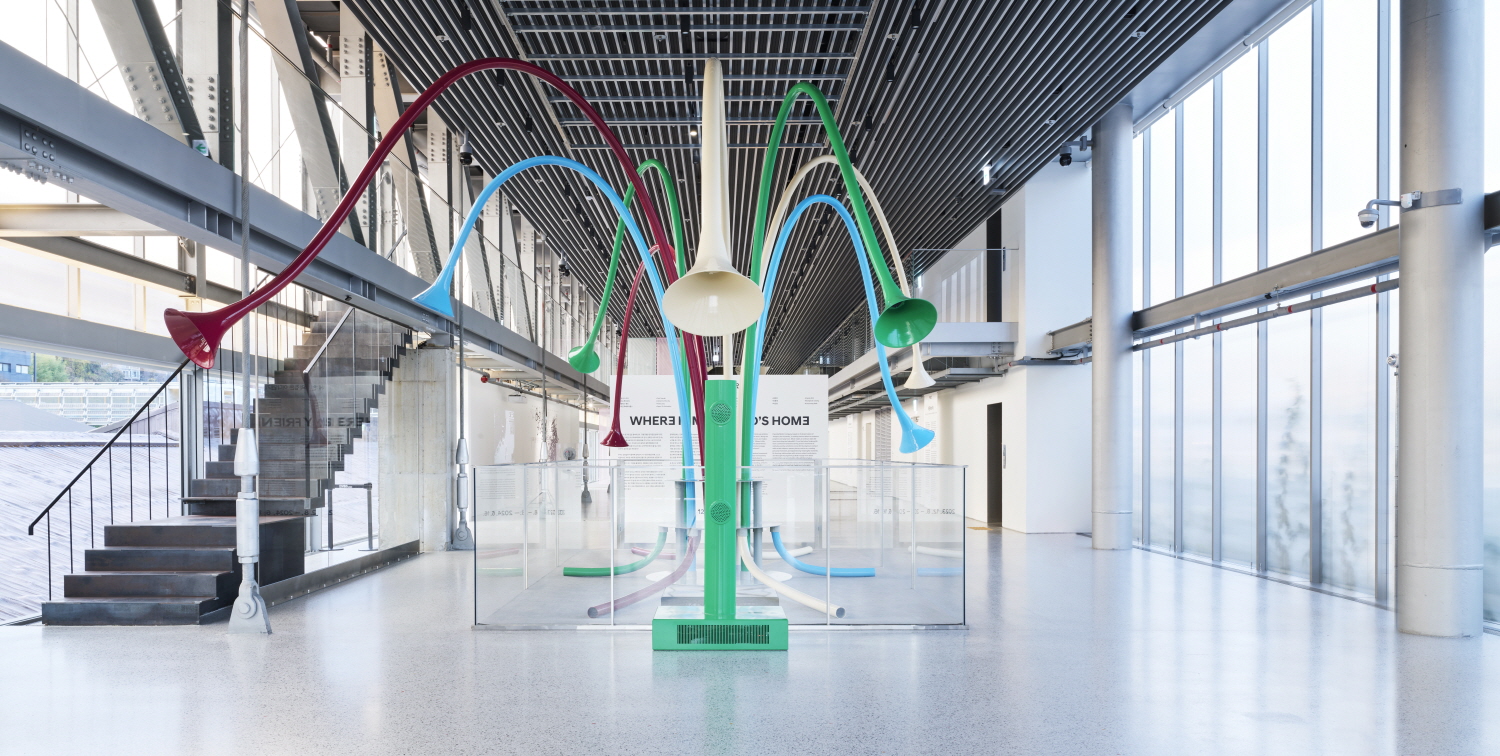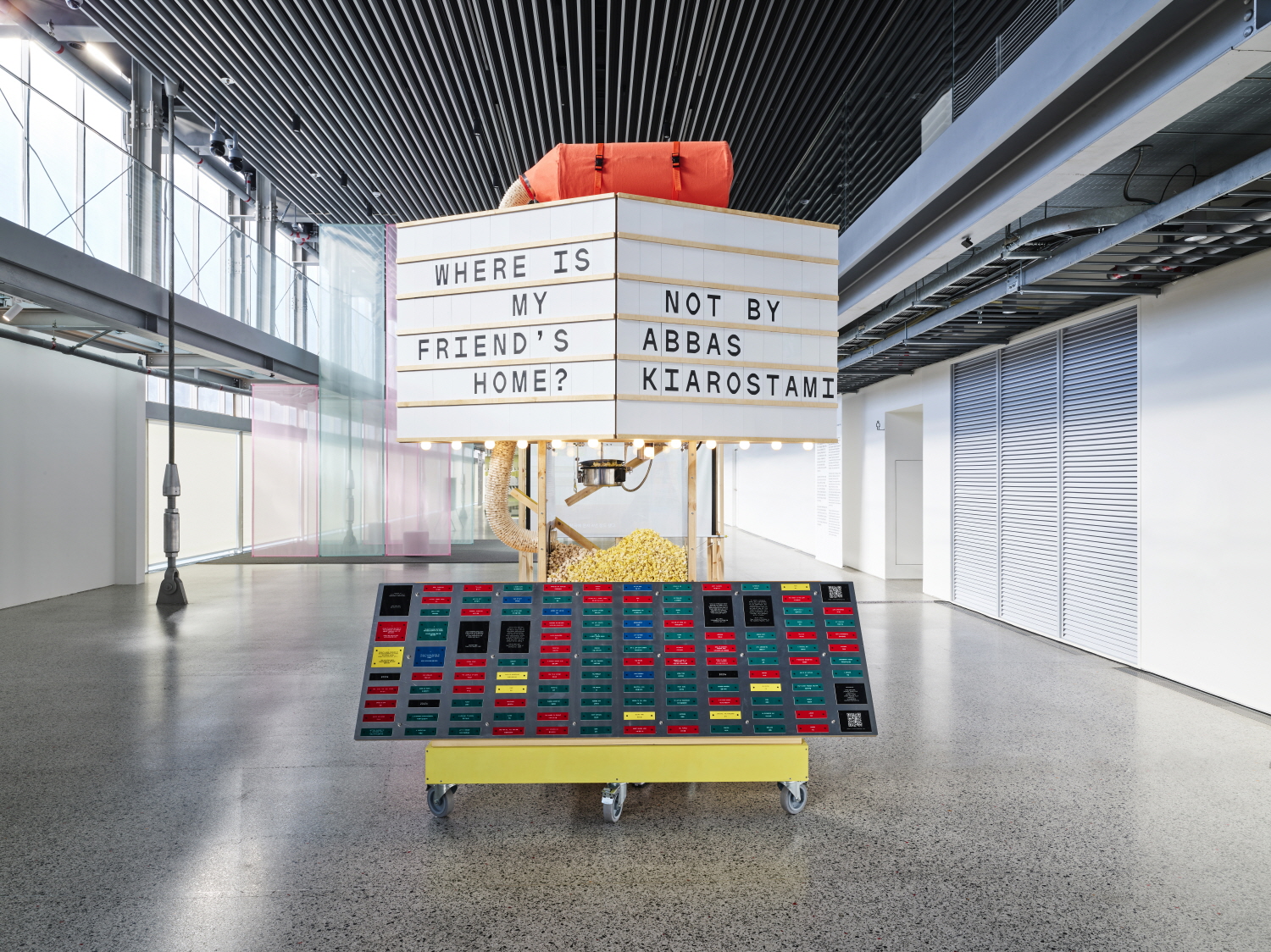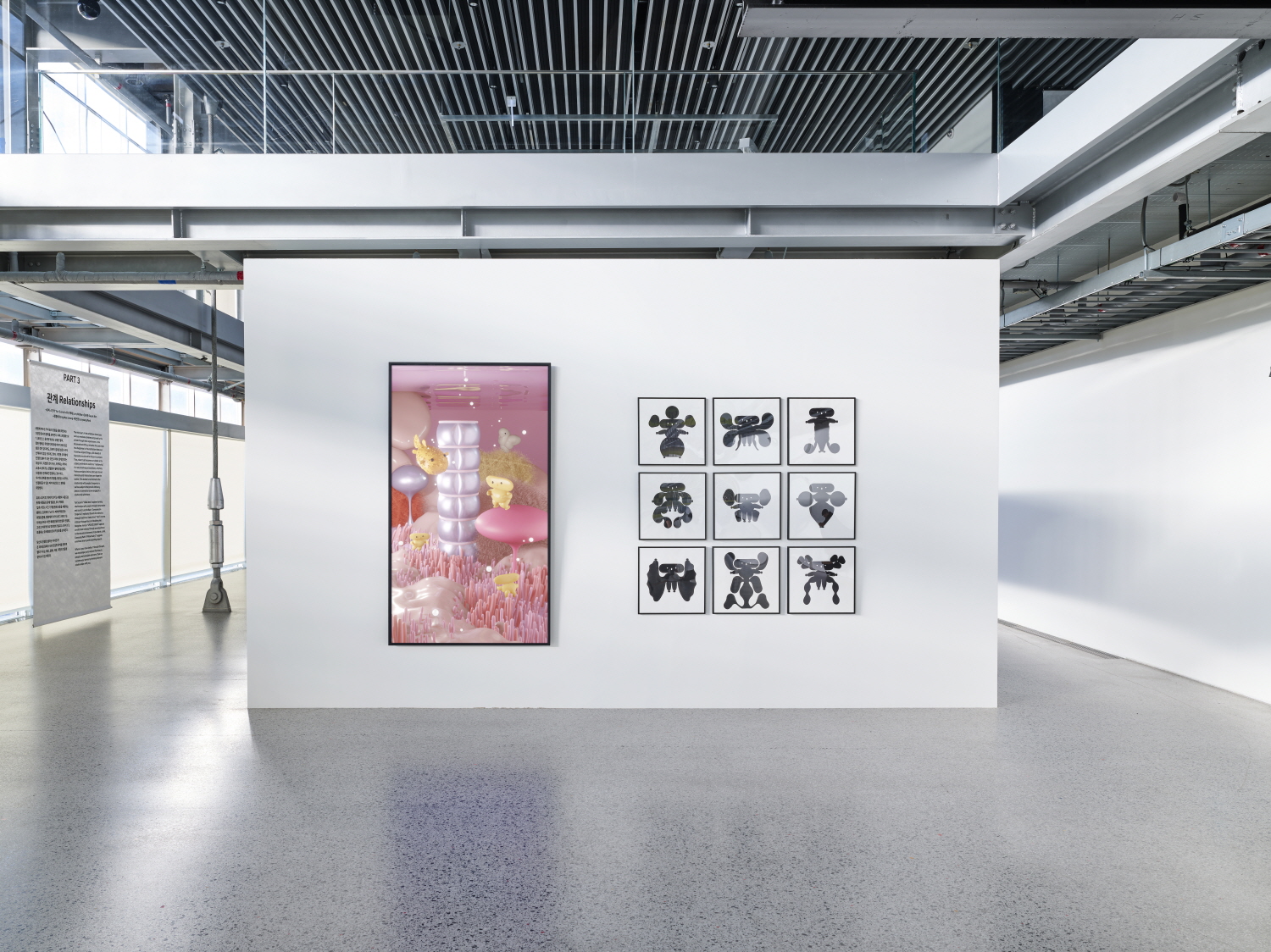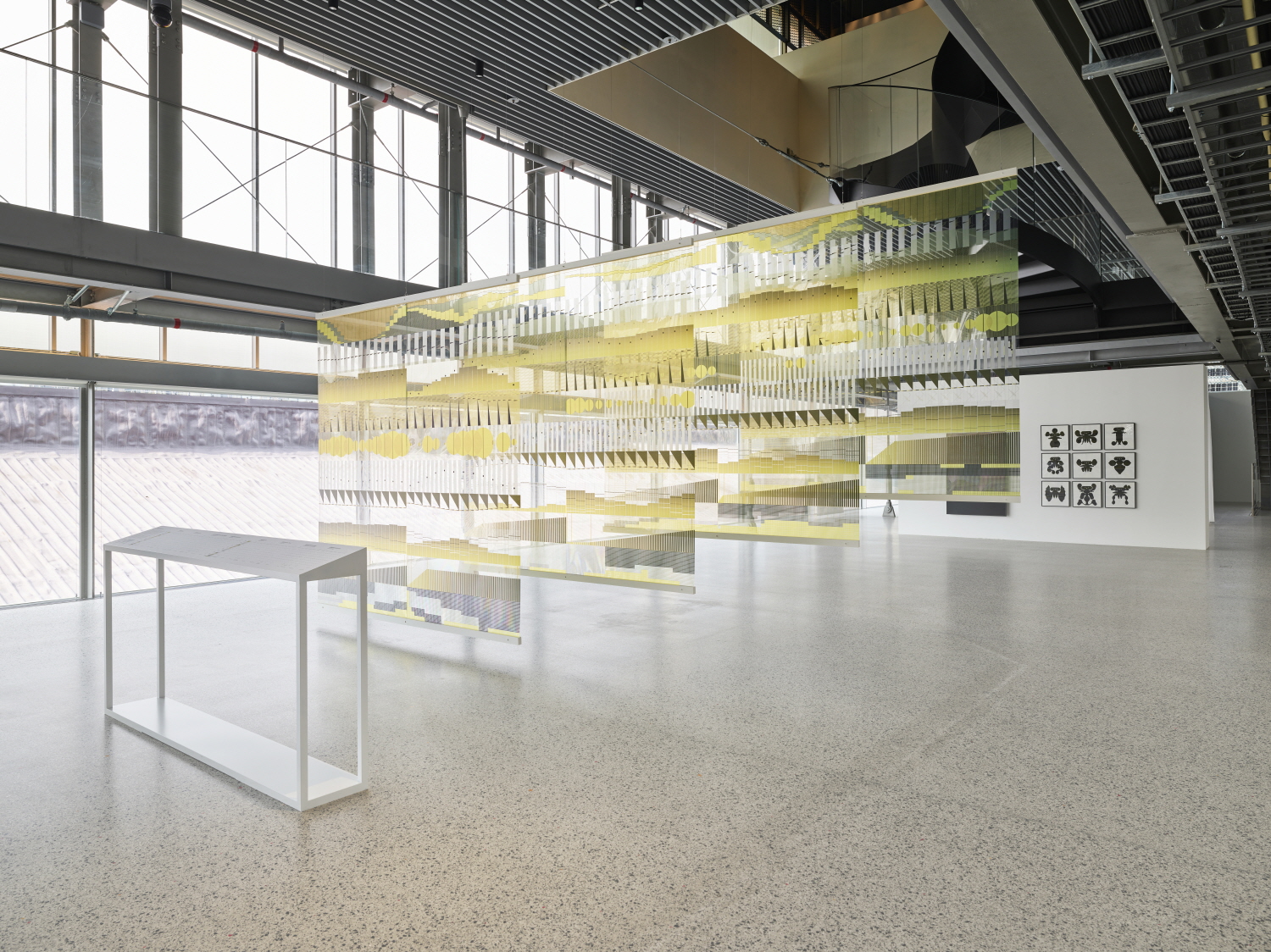SPACE MARCH 2024 (No. 676)

Installation view of Hibiki Tree ©Hyundai Motor Company

Installation view of Becoming a Balloon Fish ©Hyundai Motor Company

Installation view of Soft Landing ©Hyundai Motor Company
People may voluntarily move to study, to find work, or for education abroad, while other people are displaced and forced to migrate due to factors such as demolitions and war. Where can we find emotional stability when we move for various reasons or causes?
The Hyundai Motor Company has initiated the Hyundai Blue Prize awards to identify and nurture the next generation of global curators. The 2022 prize-winning exhibition ‘Where Is My Friend’s Home’, whose theme for the competition was Shelter Next – a solution to the fatigue that comes with inevitable situations such as pandemics and overcrowded cities – is on display at Hyundai Motorstudio Busan with admission free of charge until June 16.
In this reinterpretation of Shelter Next, the winning curator, Park Jimin, wanted to portray the journey of moving beyond fixed shelters and finding new ones in three areas: Mobility, Expansion, and Relationships. Upon entering the gallery, the first artwork visitors encounter is sound artist Yuri Suzuki’s Hibiki Tree (2023). The Hibiki Tree is shaped like a tree, and when visitors speak into a microphone that looks like a pole, their voice is transmitted through a trumpet-shaped speaker along with everyday sounds and sounds inspired by nature. The work, which seeks to create playful connections and relationships through hearing, suggests that shelter can be something intangible and fluid, like hearing, rather than something tangible, like a house.
Research-based work was particularly prominent in the Mobility section, which questioned whether a home can still be our shelter. The Meaning of Home and The Future Scenario of Euljiro (2023) by Listen to the City explores the meaning of home through citizen workshops and surveys and imagines what would happen if Euljiro became a user-centred city rather than an apartment-centred one. Underlying this research work is the idea that the value of a home in Korean society is too often reduced to a real estate investment, as evidenced by the statement that ‘A house is where you live, not a product’. Soft Landing (2023) by Open To Variables is about researching migration history, focusing on Korea. As one peruses the history on the wall, one will see the connections between significant events and institutions beyond one’s control on an individual level, such as ‘the Korean War broke out in 1950’ and ‘Koreans who fought alongside U.S. troops in the Korean War were eligible to emigrate to the U.S. in 1958’, and one will understand how they have shaped our migration history. These works concerning Mobility make us aware of the invisible hands that move us, such as real estate, war, government policy, and politics. In addition, Soft Landing lists the names of novels and films that deal with migration alongside screening interviews with five migrants, including North Korean defectors and migrant workers. The rawness in the expressions and tone of voice of the migrants telling their narratives in the interviews reminds us that migrants are living people, not just characters in history and film. Have we been consuming migrants as a narrative? This is another question that Soft Landing raises.
The Expansion part shows what we can do in an environment where we are forced to change, whether willingly or unwillingly. Becoming a Balloon Fish (2023) by Jang Myungsik is an animated film that follows the search for an ideal shelter for its cute little protagonist, a Jelly human, in a pink water environment, while nine accompanying drawings show the development of body parts such as webbed feet. The artist’s positive attitude towards the future is evident in the Jelly humans’ adaptations to the effects of global warming, such as sea level change. Sugarcane from the South (2023) examines the migration of sugarcane and humans through archetypes. As one follows this path, one realises that humans and the environment have interacted and influenced each other throughout history.
In the third part, Relationships, each artist presents their shelter. Kim Daeuk’s Nori (2023) is a norigae with the shape of braided hair. It is a work that addresses the artist’s childhood desires that had to be repressed due to Korea’s conservative culture regarding gender. The process of combing and braiding the black threads, like hair, must have been a kind of act of discipline and meditation for the artist, liberating and helping to reconcile their inner self. Compression Carpet 2.0 (2019) by Lucy McRae is a machine for the act of embracing that wraps one’s whole body in a cushion-like fluff. Even if it’s not warm, there is always someone to hug for whatever reason. At the end of this journey to find a new shelter, the audience is confronted with the possibility that anything can become a shelter, whether it is a process like braiding hair or an act like hugging, so long as it relates to their memories, recollections and experiences.
The exhibition features 11 works, including some not previously mentioned, and an Archive Lounge on the third floor, where visitors can learn more about the history of this exhibition and the Hyundai Blue Prize. Meanwhile, curator Park Jimin is a Seoul-based furniture designer and curator who will be holding her first solo-curated exhibition with the Hyundai Blue Prize.

Installation view of Sugarcane from the South ©Hyundai Motor Company





